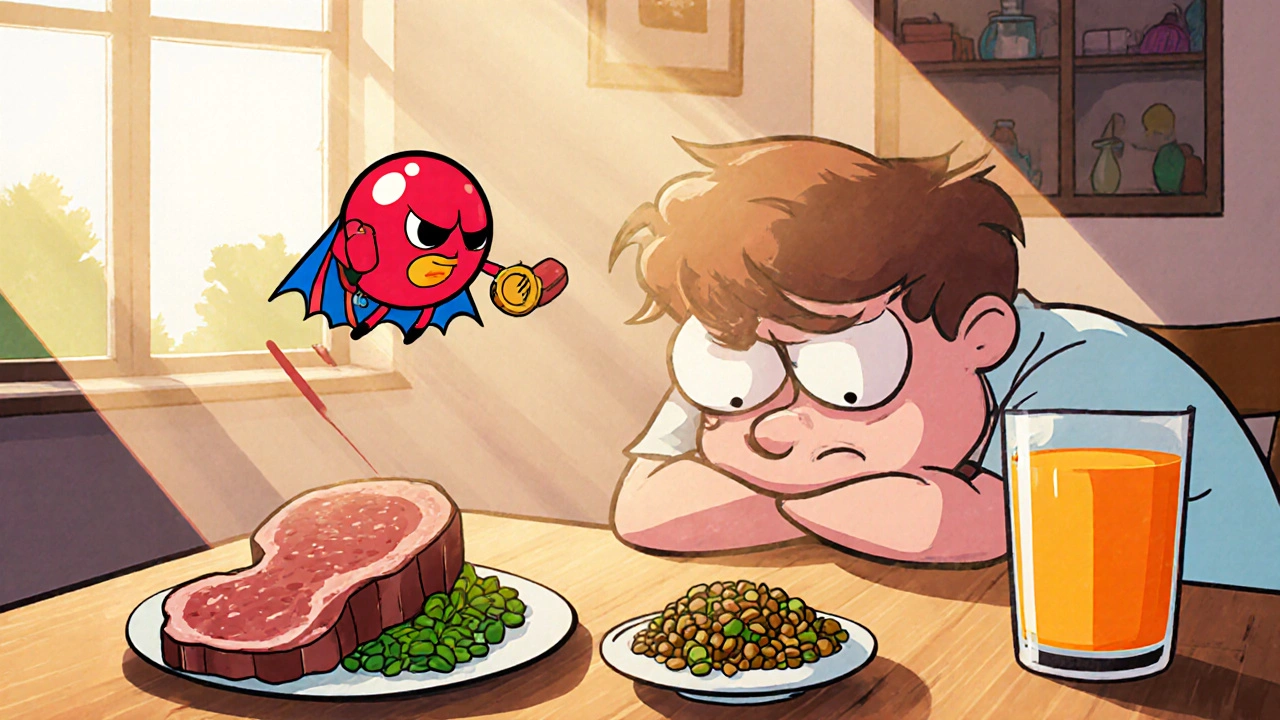nutritional deficiency anemia
When dealing with nutritional deficiency anemia, a condition where the blood lacks enough healthy red cells because of missing nutrients, dietary anemia, it helps to break the topic into its most common forms. One frequent form is iron deficiency anemia, which occurs when iron intake or absorption drops below the level needed to make hemoglobin. Another key player is vitamin B12 deficiency, often linked to strict vegetarian diets or absorption problems in the gut. A third variant, folate deficiency anemia, shows up when folic acid intake is low, especially during pregnancy. Understanding these sub‑types is the first step toward spotting the problem early.
Why do these deficiencies matter? nutritional deficiency anemia reduces the blood’s ability to carry oxygen, which can cause fatigue, shortness of breath, and pale skin. The condition also forces the heart to work harder, sometimes leading to palpitations or even heart failure in severe cases. Diagnosis typically involves a complete blood count, ferritin or serum iron tests for iron deficiency, methylmalonic acid for B12, and serum folate levels for folate deficiency. Once the specific lack is identified, treatment becomes straightforward: iron supplements for iron‑deficient patients, B12 injections or oral cyanocobalamin for B12 shortages, and folic acid tablets for folate gaps. Diet changes—like adding red meat, leafy greens, legumes, dairy, or fortified cereals—support the medication regimen and help prevent relapse.
Practical steps you can take today
First, assess your meals: are you getting enough iron‑rich foods such as lean beef, lentils, or spinach? If you’re vegetarian, pair plant‑based iron sources with vitamin C to boost absorption. Second, consider a B12 check if you avoid animal products, take certain medications, or have gastrointestinal issues; a simple blood test can catch a deficiency before symptoms flare. Third, for anyone planning a pregnancy or already expecting, a daily folic acid supplement is a proven way to avoid folate‑related anemia and reduce birth defects. Fourth, keep an eye on red‑cell indices—if you notice persistent fatigue, get a quick lab workup; early intervention stops the condition from spiraling. Finally, discuss any supplement plan with a healthcare provider, as excess iron or B12 can cause its own problems.
Armed with these basics, you now have a clear picture of what nutritional deficiency anemia looks like, how its main sub‑types differ, and which tests and treatments work best. Below you’ll find a curated selection of articles that dive deeper into specific medications, diet strategies, and patient stories, giving you actionable insight for every stage of the condition.

Anemia Linked to Pesticide Exposure: How Nutrient Deficiencies Boost Toxicity
Haig Sandavol Oct 16 6Explore how iron, B12 and folate deficiencies make the body more vulnerable to pesticide toxicity and cause anemia, with practical steps to detect and break the cycle.
More Detail